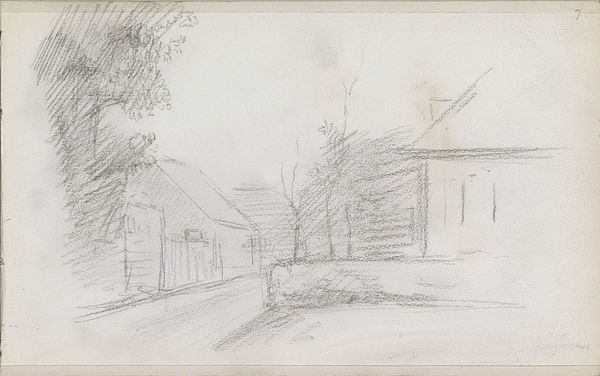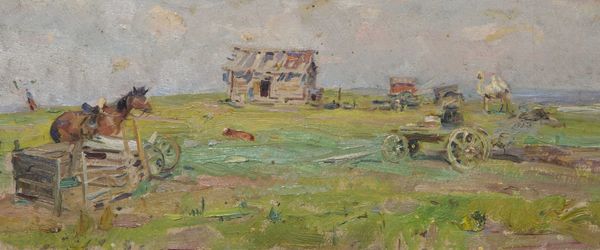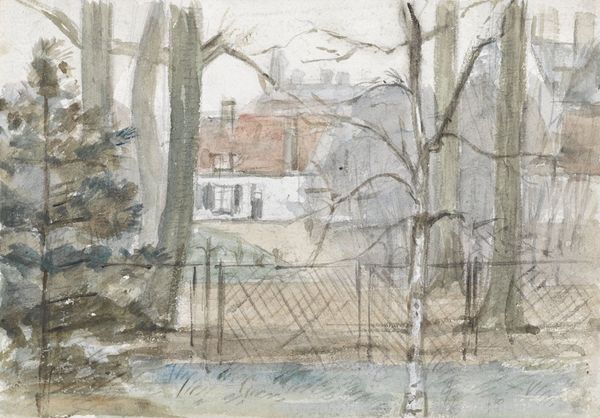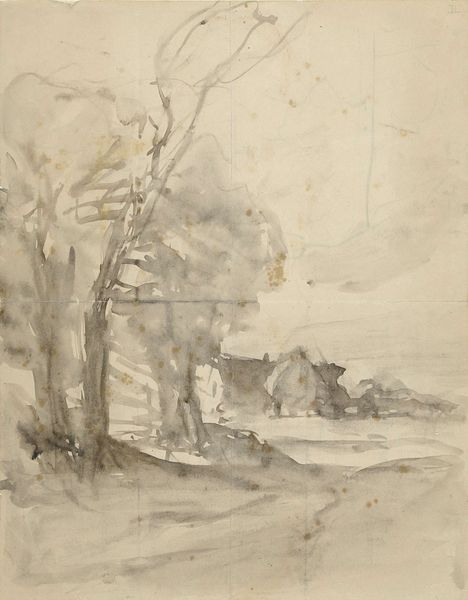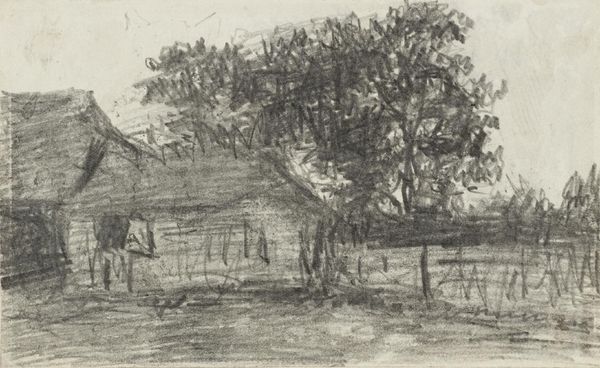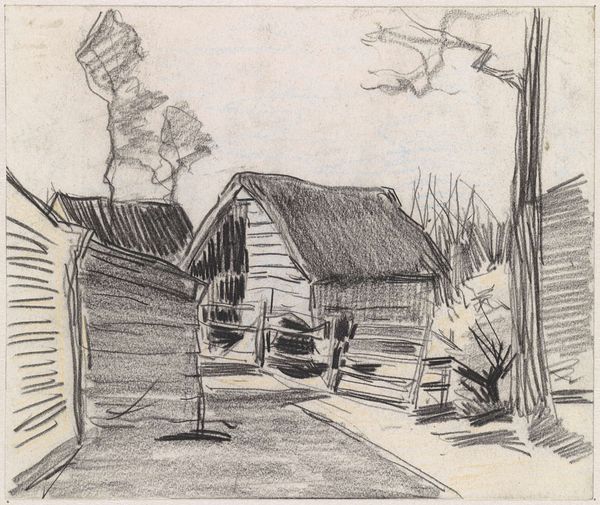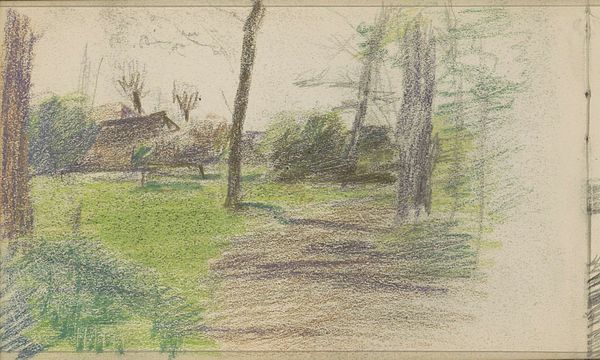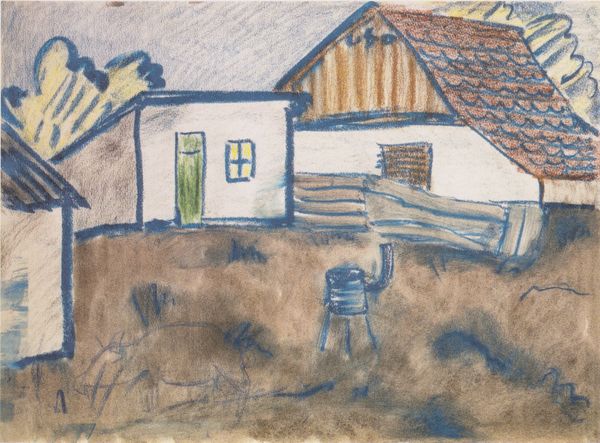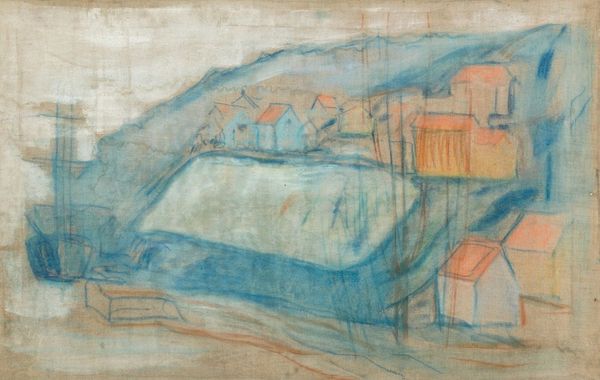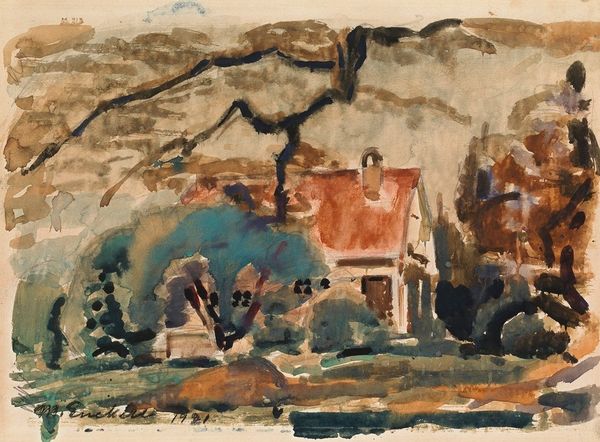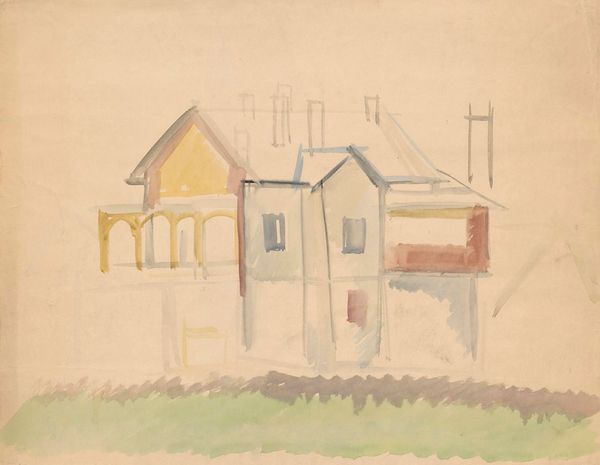
drawing, pencil
#
drawing
#
landscape
#
pencil
#
cityscape
#
realism
Copyright: Public Domain: Artvee
Editor: This is "Manor House Sketch – Lusławice," a pencil drawing by Jacek Malczewski, created around 1924. It feels quite ethereal, almost like a memory fading away. I'm intrigued by the ghostly figures and the prominent tree stump in the foreground. What jumps out at you when you look at this piece? Curator: What strikes me is the artist's apparent process. He hasn’t tried to hide the labor, has he? Look at the hatching and layering of pencil strokes. They’re not just rendering form; they’re announcing the very act of drawing, the movement of the hand. This immediately suggests an awareness of his medium as a commodity, manufactured through an industrial process, sold and bought, used up and discarded, doesn’t it? Editor: That's an interesting point! I was so focused on the subject matter, I hadn't considered the pencil itself. Does the choice of pencil, a relatively accessible material, challenge the idea of the artist as some kind of elite genius? Curator: Absolutely. Think about the social context: Poland in the 1920s. A newly independent nation piecing itself together. Malczewski could have chosen oil paint and canvas, traditionally associated with high art and wealth, but instead he turns to pencil on paper, a democratic, reproducible medium. This immediately democratizes landscape art itself, offering an accessible viewpoint for viewers in a tumultuous time. Do you see the parallels between that stump in the foreground and the landscape being refigured politically? Editor: I think I do! The stump implies a cutting away of the past. It feels raw, exposed, almost violent in its stillness. It invites reflection on this period's transformation from the point of view of the people who inhabited it. Curator: Precisely! It's a glimpse into the way material conditions and labor underpin the most seemingly simple artistic choices. Editor: I never considered the socioeconomic implications behind something as simple as choosing a pencil, but now I have a better appreciation for the artist’s means. Curator: Indeed. By understanding the materiality and production of art, we can uncover powerful statements about society, labor, and even value itself.
Comments
No comments
Be the first to comment and join the conversation on the ultimate creative platform.
